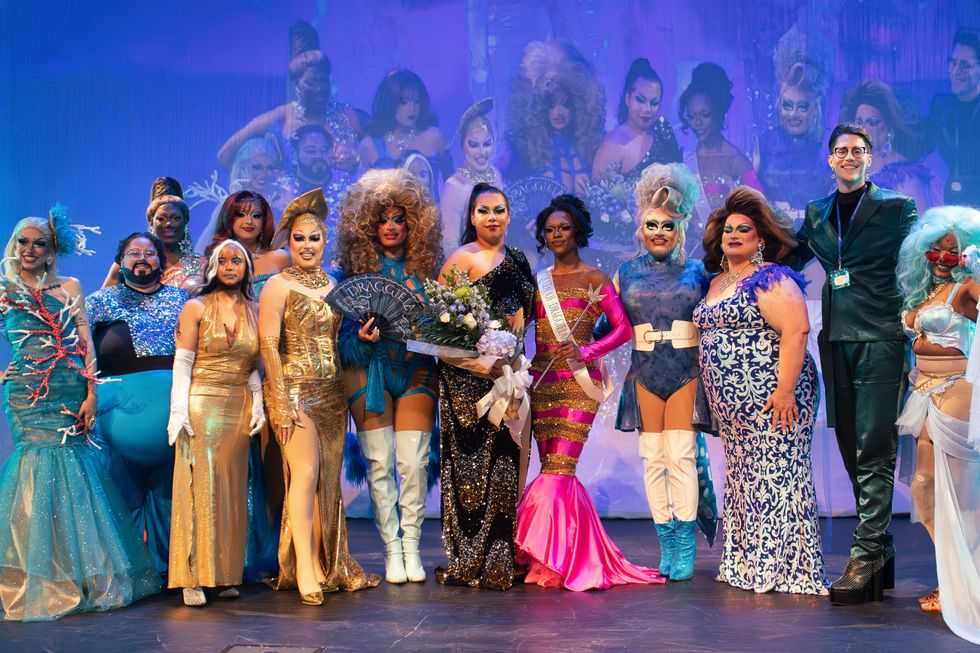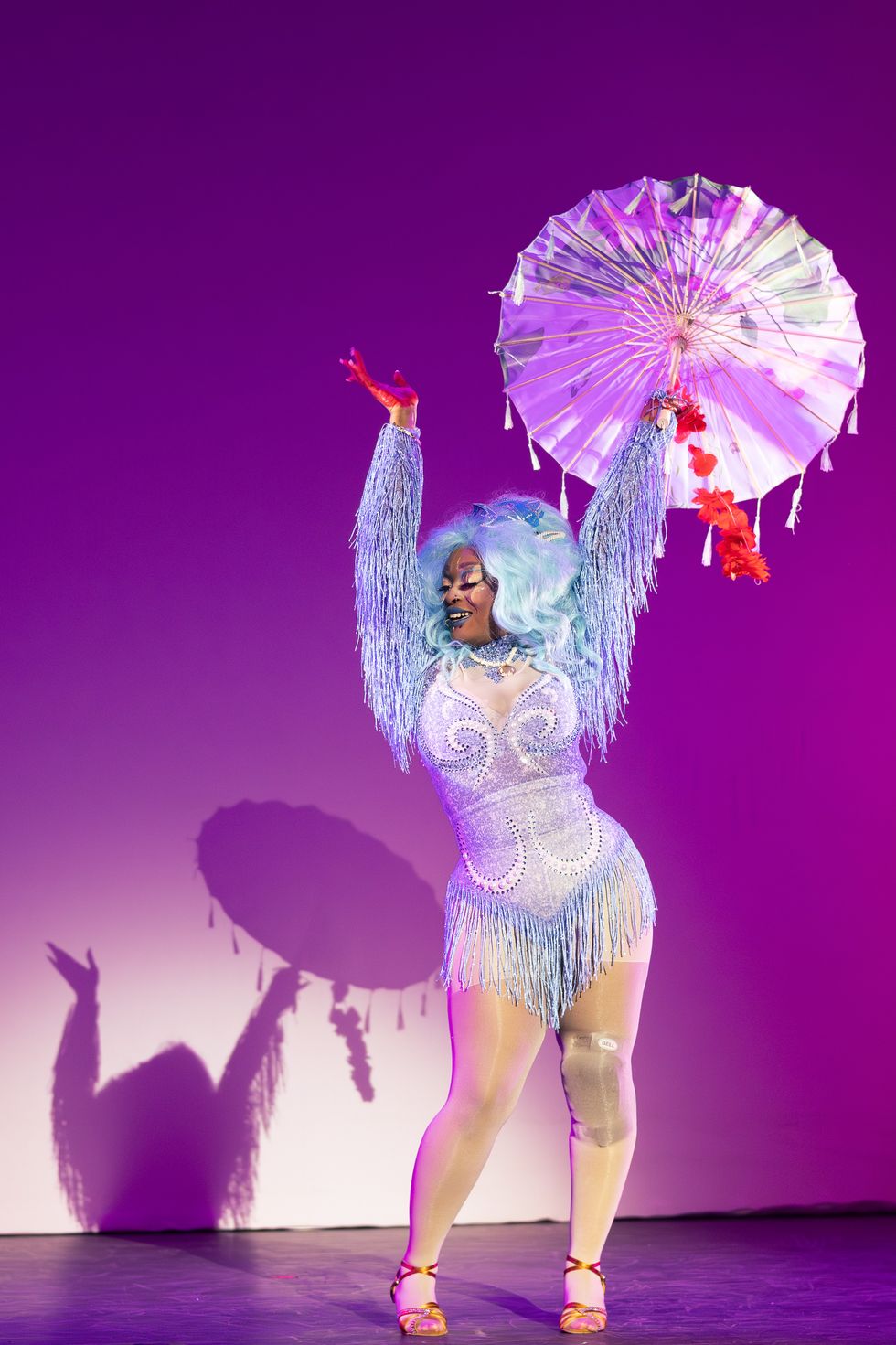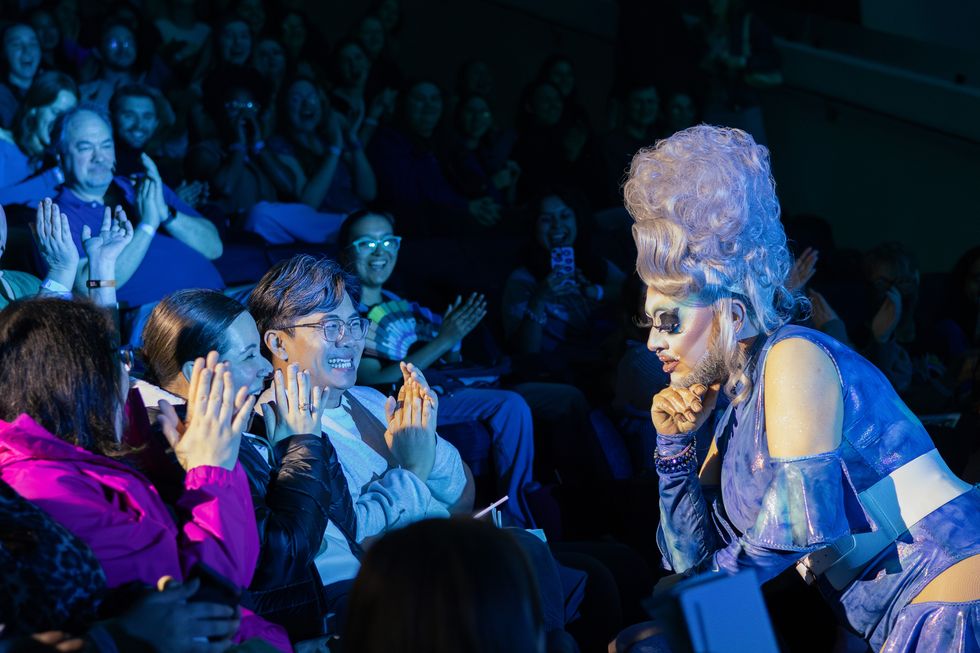It’s been nearly a decade since Jason Russell, Bobby Bailey, and Laren Poole—three young, guileless college filmmakers with a used camera they had bought on eBay—embarked to east Africa to film the war in Darfur. Instead, they found themselves in Uganda, collecting footage for a film about an entirely different conflict. The low budget project was titled Invisible Children and documented the horrors perpetrated by the Lord’s Resistance Army (LRA), a violent Christian fundamentalist group led by Joseph Kony. The LRA had been waging a war against the Ugandan government for more than a decade, using child soldiers and large-scale civilian attacks. When the film premiered in front of 500 or so people in a community center in San Diego, CA, Ben Keesey, a friend of the trio’s, was so moved by the film that he accompanied the filmmakers on a second trip to the embattled country to see the conflict for himself. It was there he decided to abandon a job offer from financial giant Deloitte to join the threesome and help turn the film into a movement.
And that is exactly what they did. You only had to attend one of their Fourth Estate Summits to see it. The organization’s annual awareness and fundraising event felt like a cross between a rock concert and Revivalist gathering, drawing in thousands of young, impassioned people from around the world. But it was Invisible Children’s campaign to “End a War” in Uganda that would propel the organization to global renown in March 2012. The campaign’s official hashtag, #Kony2012, achieved an incredible reach, with pop icons like Diddy, Beyoncé, and Justin Bieber making unprompted public pronouncements about the plight of child soldiers in Uganda. The video peaked at more than 100 million views on YouTube and Kony soon became the world’s most wanted man. But other stars were made as well—most notably Russell, the earnestly hopeful, protagonist of the film.
As the video and the social media campaign went viral, however, the tone of the conversation surrounding Invisible Children grew more and more cynical. Invisible Children’s public financial records were dissected. The lives of its founders were scrutinized, The entire endeavor was increasingly portrayed as a result of a "White savior complex" gone awry. In the midst of it all, co-founder of Invisible Children and face of its movement Jason Russell, had a public breakdown that was filmed and posted online in March 2012.
To be sure, Invisible Children leadership has been scaling back operations and sending out smoke signals for almost a year now. Earlier in the year, Russell and Keesey hinted at putting the organization to bed. In this interview, CEO Ben Keesey tells us that in the next year the organization will be shutting down all U.S. operations and transferring control of their Uganda, Congo, and Central African Republic programs to local groups. We spoke to Keesey about Invisible Children’s improbable journey, its impending transition, and the lessons its leaders learned along the way.
Would it be safe to say that Invisible Children has been moving towards today’s announcement for a year or so?
Yeah, definitely. In 2003, when our founders went to Africa and discovered this conflict that involved child soldiers and almost got killed when the LRA bombed a truck in front of them, they came home and shared that story very authentically and in a very raw manner with their friends and family. I was one of the friends and family, and that’s how I got involved. My previous background was with Deloitte, the big accounting firm.
That spirit has been in our DNA since day one, whether it’s the mountain-top-high moments that we’ve gone through, passing a bill through Congress or raising millions of dollars...or moments of the campaigns that don’t really work or, like you were seeing in the last two years, a challenge to raise funds so that we have the financial resources to keep going in the current way. We’ve done everything we can. We’ve tried to stay very true and authentic to our supporters in giving them that message. So we’ve been sending out, to our key alumni, to key supporters, the message.
When exactly did you start discussing the end of Invisible Children?
It was about a year and a half ago that we really started seeing how difficult it was going to be for us to reinvent our model after the Kony campaign. We’ve been here for nine and a half years and we’ve had so many moments like these—you know, where our backs are against the wall, where it seems like there’s no viable path forward. There have been consistent miracles for us along the way [enabling] us to be an organization that’s lasted for 10 years because we’ve taken such an urgent, emergency-style approach to a deadly conflict. The staff and the team is very well versed and used to major changes. When the dust settled from the Kony 2012 campaign, we had millions of dollars that we had raised. We netted about $12 million from that campaign alone.
For about the 12 months after that film launched, we worked and invested millions in Africa, believing that’s why people donated the money, and believing there was nothing better for the mission or for our organization than to see captive women and children come home—that being our biggest, unique role that we can play. Since that film, we’ve invested $16 million into our offices in Uganda, Congo, and then started a whole new office in the Central African Republic where the majority of the LRA rebels currently are. That was incredible. It was phase one after the Kony campaign: Let’s put the money to work. Let’s put our heads down. We didn’t really need to focus on fundraising. We just wanted to achieve things on the ground.
It was really a year and a half ago to a year ago when we started to need to really reengage our base in the fundraising mechanisms that we had and that was when we started realizing—gosh, this is going to be way harder to get people to understand and really buy into, with their time and money, the idea of finishing something to zero. Of all the things that are unique about Invisible Children, that’s one of them, that we’ve taken this very focused approach to one issue. We don’t work on anything else in the world. We’ve used very bold statements since the beginning of “End A War,” “Every War Has An End,” and “Kony 2012,” meaning this guy, this year, this war needs to end. That hyper-focused approach has been one of our greatest strengths as an organization, but as you get closer to the finish line, the next hurdle is harder. And to get people to understand and to support the final laps of a long race has been more challenging than we thought it would be.
[quote position="full" is_quote="true"]One of the obvious things that we learned in the wake of the Kony 2012 campaign was how important it was to be able to simply tell your story. And I don’t think we did that very well during the media backlash.[/quote]
What, ultimately, can the world learn from both the successes and failures of Invisible Children?
I think the biggest lesson that anyone in the nonprofit or social impact space can learn from our work up to and including the Kony 2012 campaign is the power of a face-to-face connection. That sometimes gets lost in the new age of media and it was definitely lost in the coverage of people asking, “How did that film go mega-viral?” When we are asked that question, we start with, “Because we put in the previous seven years going to peoples’ schools, sleeping on peoples’ couches, being really integrated in communities all over the United States.” When you’re asking young people to engage and donate their time, their energy, their money, to a cause like ours that happens half a world away, it’s important you meet them where they’re at.
The successes…of bills getting passed, resolutions being made, and so many world leaders making commitments against the LRA in the wake of the Kony 2012 campaign—that’s as much because of the couple thousand students that did in-person, local lobby meetings with their member of Congress as it was because the YouTube videos hit 100 million views. It takes that face-to-face, low-to-the-ground traditional activism that’s complemented by the digital side of things. That’s one thing that everyone can take away from how we achieved that success.
One of the obvious things that we learned in the wake of the Kony 2012 campaign was how important it was to be able to simply tell your story. And I don’t think we did that very well during the media backlash. And what I mean by ‘tell your story’ is have your organizational strategy and your financials all lining up to your mission. We struggled to have the language to explain that. “Why does Invisible Children invest in making films, invest in youth mobilization, on-the-ground protection work, and on-the-ground recovery?” We didn’t know how to explain why we looked a little bit non-traditional. I think we let a lot of other people define us.
Do you think expectations to tell those stories were more intense because you had established yourselves very much as masters of narrative?
Maybe. Maybe there were people that thought of us that way—primarily as storytellers, or as an awareness machine….The cynics come out and they’re so quick to tell young people, “You’re not going to be able to make change like you think you are,” how quickly they want to add the complexity or the, “Wait a minute, you good-hearted young people trying to end wars in this world, let me tell you a few things.” That voice of cynicism is, in my humble opinion, a destructive force for progress in this world.
Do you think the culture has grown more or less cynical since 2013?
I can say that for myself and for our team at Invisible Children, we are far less cynical than we were two years ago, three years ago, ten years ago, because we’ve seen how change is very possible in this world. I hope that’s one of the pervading stories that comes out of our Invisible Children journey, is that a group of average friends can actually engage their peers—other average Joes—and virtually end a war in this world. To all of the folks that said to all the youth supporters of the Kony campaign, This isn’t going to do anything, this is slacktivism, this isn’t actually going to affect peoples’ lives,” [I say] that is just patently untrue. I think it’s our job to draw straight lines between peoples’ energy and results. When you can do that, it’s super powerful. When you can harness the young peoples’ unique capacity for outrage and give them tangible actions that lead to specific results. It’s an incredible, powerful model that absolutely combats that cynical nature and culture.
[quote position="full" is_quote="true"]I think it is absolutely vital for people in the social impact space to have messaging that meets people where they’re at.[/quote]
You were frequently accused of “white saviorism.” Were those accusations anticipated? To what extent did you have conversations in the Invisible Children office about those criticisms?
Thirty days after we launched the initial Kony 2012 film, we put out a shorter film called Kony 2012: Part Two - Beyond Famous. That was, in many ways, a response to a lot of that critique in the coverage. If you were in Uganda or the Congo or the Central African Republic, Invisible Children is working directly with incredible local partners. People like Patrick Munduga in Uganda and Abbé Benoît Kinalegu in the Congo—these are legendary figures in their local communities that we’re supporting, either through grants, bringing them on the staff or doing capacity building or really following the vision of these local folks. So that was very disappointing that we were branded as just the American, sort of, “heroes,” when we see ourselves much more as reporters to these incredible groups. And, functionally, we are. Since then, we’ve highlighted a lot of those partnerships a lot more directly.
There was a lot of criticism that you were promoting ‘slacktivism’, or at least fostering it among your supporters.
I think it is absolutely vital for people in the social impact space to have messaging that meets people where they’re at. There are people in this world that have never gotten involved in any cause-based work. I was one of those people throughout my young life. Sometimes, step one is watching a film online and then telling your friends on Facebook that you care. I think that is a part of a person’s cycle of engagement.
Now, at the same time, the general critique that that is where Invisible Children stops is just completely false, and it’s invalidated by 10 years of our experience. If you look at the Kony campaign, it was 100 million views on its own, and then it was 3.7 million people who signed an online pledge. I personally delivered that pledge to members of the White House, the African Union, the UN—it was extremely effective for driving political will and momentum. Then we had close to 10,000 people show up to the physical event in D.C. that was a direct catalyst to the Rewards for Justice bill being passed and signed by President Obama in January 2013, which was the signature advocacy push of the campaign. So there were hundreds of thousands of young people who were going to extreme lengths to show up to physical events and meet with members of Congress and do that hard work.
To what extent did Jason Russell’s public breakdown and the ensuing media coverage affect the downward trajectory of Invisible Children?
It’s a fair question. Jason’s breakdown is absolutely one of the many factors that have made the last two years harder, especially because it came during a time when there were so many other very unsubstantiated critiques and concerns about Invisible Children. That happening at the same time gave a lot of people a very easy excuse to just sit on the sidelines and to not have to deal with the reality of the LRA or their responsibility to contribute to it. It took a lot of time for us to get [the truth] out, that that was a legitimate mental health crisis that he went through and not some of the drugs-and-alcohol headlines that were there at first...[Russell] took six months off and came back to work and that really resonated with our core supporters. Jason could have gone off to make Hollywood movies a thousand times, but the fact that he wanted to come back and see this mission through was motivating to our followers.
So, in a nutshell, the plan is to close down U.S. operations and hand over your programs in Uganda to local partners?
Exactly. That’s the transition plan. These small groups and these local leaders that we’ve worked with now for years, over 2015, we’re going to be transitioning the ownership and the operational control of some of the most essential work going forward to these local groups.
How about you guys individually? What sunset are you and Jason riding off to?
Jason’s is going to be working on writing a book on teaching your children about activism. He kickstarted it. It’s called The ABC's of Activism.
I’m going to come back to work in 2015 and lead this small programs and advocacy team that’s going to manage and govern the transition. At one point, I will step away when that team is up and running. I am now infected with the beautiful but life-changing...spirit of wanting to make peoples’ lives better and making communities safer. So I’m definitely not going back to work on Wall Street.















 Let us all bow before Gary, the Internet's most adventurous feline. Photo credit: James Eastham
Let us all bow before Gary, the Internet's most adventurous feline. Photo credit: James Eastham Gary the Cat enjoys some paddling. Photo credit: James Eastham
Gary the Cat enjoys some paddling. Photo credit: James Eastham James and Gary chat with Ryan Reed and Tony Photo credit: Ryan Reed
James and Gary chat with Ryan Reed and Tony Photo credit: Ryan Reed


 Rock deterioration has damaged some of the inscriptions, but they remain visible. Renan Rodrigues Chandu and Pedro Arcanjo José Feitosa, and the Casa Grande boys
Rock deterioration has damaged some of the inscriptions, but they remain visible. Renan Rodrigues Chandu and Pedro Arcanjo José Feitosa, and the Casa Grande boys The Serrote do Letreiro site continues to provide rich insights into ancient life.
The Serrote do Letreiro site continues to provide rich insights into ancient life.

 The contestants and hosts of Draggieland 2025Faith Cooper
The contestants and hosts of Draggieland 2025Faith Cooper Dulce Gabbana performs at Draggieland 2025.Faith Cooper
Dulce Gabbana performs at Draggieland 2025.Faith Cooper Melaka Mystika, guest host of Texas A&M's Draggieland, entertains the crowd
Faith Cooper
Melaka Mystika, guest host of Texas A&M's Draggieland, entertains the crowd
Faith Cooper


